What is crimplen and where is it used?

Crimplen is a fabric that was very popular in the Soviet Union. Now she is experiencing a second wind. The practical and attractive material is used to create not only retro-style outfits, but also quite modern-looking skirts and coats.
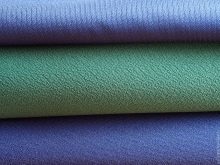


What it is?
Crimplen is a type of fabric made from synthetic threads. The material is easy to clean and does not wrinkle for a long time. Crimplen can also be called polyester synthetic fibers and fabrics, which they are based on. The fabric received an unusual name from the Crimple River and the Crimple Valley area - the location of the laboratory in which the crimplen was developed.
The material has a number of positive and negative characteristics. It is distinguished by its durability and strength due to the use of the false twisting method, and therefore it is able to serve for many years without losing its original appearance. The canvas does not differ in roughness, but at the same time it keeps its shape well and does not stretch.


A huge plus is that things from the crimplen do not wrinkle: even after a long stay folded in the closet, you can do without an iron. The fabric has good thermal conductivity, and therefore does not allow cold air to pass through and retains the heat of the human body.
Despite the fact that caring for crimplen has its own specifics, it cannot be called particularly difficult. Even in the case of significant pollution, it will be possible to get by with budgetary funds.
The fabric does not fade in the sun, does not shrink after washing, does not become lumpy or deformed. A significant advantage is its antibacteriality, since bacteria simply do not linger on the surface.
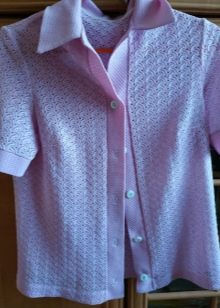


Nevertheless, the material still has a number of significant drawbacks. The fabric does not absorb moisture well, but at the same time dries for a long time. The canvases are so electrified that they require antistatic agents and attract dirt. Material can be difficult to work with as it crumbles around the edges during cutting. In addition, it is almost impossible to drape crimplen clothes with beautiful folds, which significantly limits the choice of styles. It should also be taken into account that the fabric, being synthetic, is very poorly permeable to air, and it is extremely uncomfortable to stay in it in hot weather. Wearing it on people with sensitive skin can provoke itching, irritation and other allergic reactions. It should also be mentioned that the hit of the slightest spark will provoke the appearance of a noticeable hole that spoils the thing.
Krimplen is made in plain color or decorated with a printed pattern. The reverse side of the canvas is characterized by smoothness, and the front side has a roughness, often with a textured pattern. Sample thickness and structure may vary. For synthetic fabrics, a sublimation printing method is used, due to which the pigments penetrate deeply into the structure of the fabric. The finished image remains unchanged for a long time, without crumbling or fading.
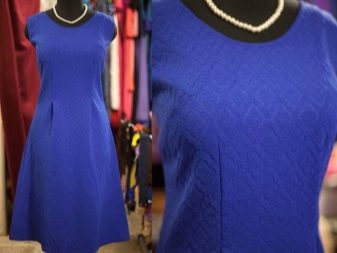

History
It is believed that crimplen fabric appeared in one of the British textile laboratories in 1946: it was then that an official patent was issued for the technology of its manufacture. Its analogue called lavsan was created in the USSR a little later, in 1949. Initially, the canvases were used only for the purposes of the defense ministry, but they quickly began to be used in other areas. Crimplen clothing began to be created in Europe in the 50s of the last century. At first, she failed to attract the attention of the public, but the demonstration at one of the fashion shows of a mini-dress made of this fabric radically changed the situation.
In the USSR, crimplen appeared in the late 60s, and the peak of its popularity came in the 70s of the last century. The material has been used in everything from underwear to coats. The demand for similar synthetic clothing was observed all over the world. Crimplen stayed at the top for a couple of decades, and then other synthetic designs with more alluring characteristics took its place. Natural and blended fabrics were also added to the list of competitors.
It is believed that the loss of popularity of synthetic fabric could be influenced by its wear resistance. Things that never went out of order were not only a problem for the industry, but also a frustration for women seeking constant wardrobe changes.



Features of production
At the heart of the crimplen fabric are polymers, more precisely, linear polyester fibers lavsan and polyester, which determines the peculiarities of its production. In addition, elastane, polyamide, viscose and other components of artificial origin can be added to the composition. Viscose is intended to improve air permeability, elastane to increase elasticity, and polyamide to make fabrics smoother.
The synthetic raw material, heated to the glass transition temperature, is pulled through the dies, which allows it to be shaped. Further, a false twist method is used to transform synthetic fibers into yarn. The resulting threads not only gain significant strength, but also become voluminous, remaining thin. At the next stage, the workpieces are heat treated. As a result, they become soft and even outwardly begin to resemble viscose or wool. At the final stage, fabrics of different thicknesses and structures are woven from individual fibers.


Manufacturers overview
Since the popularity of crimplen today is not comparable to that observed in the last century, the material is not found in every store. Vintage samples from the USSR are found only at online flea markets and in specialized boutiques. By purchasing material in such places, you can be sure of the quality and authenticity of the paintings. The cost of a running meter of vintage crimplen reaches 1000 rubles.
Countries such as India and China, Turkey and Syria, Ukraine and even Germany and Italy are engaged in modern production of synthetic fabric. The pricing of such a crimplen takes into account both the relevance of the colors and the cost of production.
For example, the cheapest version can cost 250 rubles per running meter, and a higher quality one can cost 500-600 rubles.
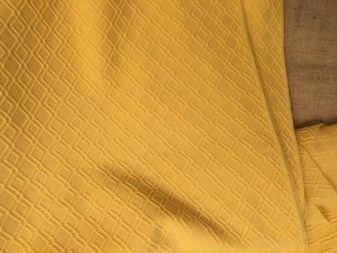

Applications
Today, the material is actively used to create outerwear. The most dense samples with an interesting texture are transformed into men's and women's demi-season jackets, raincoats and coats. The free cut of such crimplen products allows you to wear warm underwear under them. Also beautiful suits, jackets, trousers and skirts are made from crimplen. Low creasing prevents deformation of jackets, and a wide range of colors allows you to choose an option for every taste. The fabric is used as a filler for warm jackets, as well as an alternative to knitwear for the production of jumpers and cardigans.
However, most often dresses are created from canvases: both in a modern style and paying tribute to the retro style.

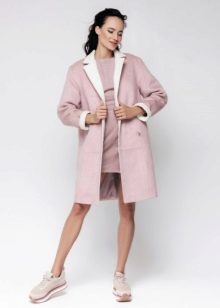

Designers who choose crimplen as a base usually prefer laconic models with a minimum amount of detail. For the summer season, it is recommended to purchase only those crimplen things that contain viscose fibers that reduce thermal conductivity. It should also be mentioned that the material has recently been increasingly used in interior design. Canvases become the basis for curtains, furniture covers, patchwork quilts, decorative panels and other textiles.
Crimplen underwear and swimwear, so popular in the era of the USSR, are no longer being created, as less rigid and more hygroscopic alternatives have appeared.


Care Tips
The textured polyester, which is the basis of crimplen, is electrified and attracts dust, and therefore requires special care. So, washing is necessary often, but it is possible only at a temperature not exceeding 30 degrees. Products can be processed by hand or in automatic devices on the "synthetics" or "hand wash" programs. It is important to take into account that the powder is poorly washed out from the cloths, and therefore the clothes will need an additional rinse with plenty of water. Krimplen must not be processed together with other fabrics. Its preliminary soaking should not exceed 30 minutes, and direct washing should not exceed 0.5-1 hours.
The fabric reacts well to any detergent, except for bleach and powders containing aggressive ingredients. It is best to use a gel, as it is easier to wash out of synthetic fibers and does not leave streaks. The spinning of the canvases is considered categorically unacceptable. Drying of crimplen is carried out away from heating devices and direct sunlight. Drying in the fresh air under the shade of trees is considered ideal.
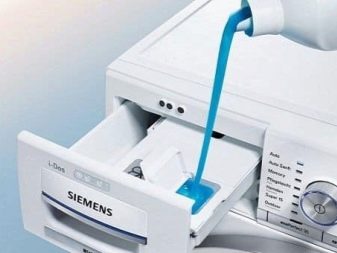

The clothes will look good even without ironing, but if you really want to, you can iron them out from the wrong side by choosing the "synthetics" mode.
The temperature in this case should not exceed 180 degrees and it is best to use damp gauze. It is not forbidden to steam off crimplen things.
The material quickly accumulates dust and should therefore be stored in a protective polyethylene bag. Beforehand, things will need to be neatly folded or hung on a hanger.It is also worth mentioning that stains from crimplen clothing can be removed using ordinary laundry soap. In this case, the contaminated area is moistened with water, then rubbed with soap and rinsed. Stubborn stains are quite successfully removed in dry cleaning.










